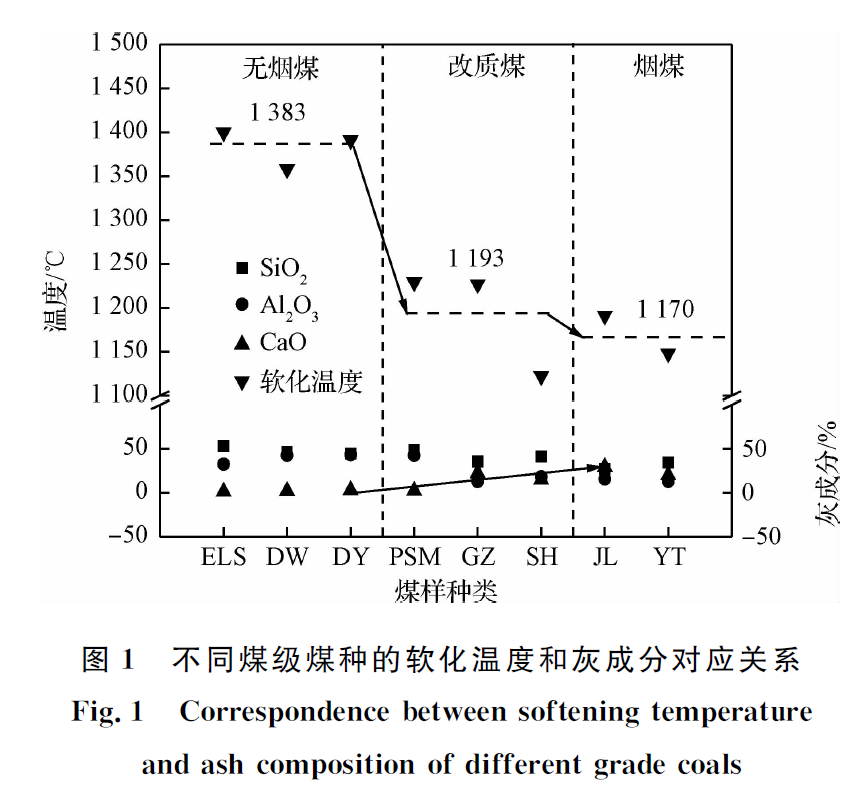15358968703

Comprehensive characteristic analysis of blast furnace fuel injection
After decades of development, the technology of pulverized coal injection into blast furnace has become a common technical means used by major iron and steel enterprises at home and abroad. Coal injection into blast furnace plays an important role in reducing the amount of coke, coke ratio and fuel ratio. At present, the coke reserves and supply throughout the country are becoming increasingly tight, which directly leads to the rise of coke price and the increase of blast furnace smelting cost. Large coal injection into blast furnace can alleviate this situation to a certain extent. However, with the development and maturity of coal injection technology, some problems also follow. In order to optimize the fuel structure and control the cost, bituminous coal mixed with anthracite is often used for blast furnace coal injection. The mixed fuel enters the blast furnace from the tuyere and reacts rapidly in the raceway. In this process, some unburned residual carbon will enter the hearth, accumulate in the slag or rise with the gas flow and escape from the top in the form of blast furnace gas, which will reduce the coal coke replacement ratio, In addition, it may be attached to the pores of coke or charge through the charge during the rising process, resulting in poor permeability of charge column, which will seriously affect the internal stability of the blast furnace. Inadequate combustion of injected fuel will also reduce energy efficiency and cause environmental pollution. Therefore, the key direction of the development of blast furnace coal injection technology is to optimize the type and structure of injection fuel, reduce the cost of coal mixing, ensure that the chemical reaction of fuel in the furnace is fully carried out, and reduce various factors that may occur in the process of blast furnace coal injection that are not conducive to the smooth and stable production of the blast furnace.
Blast furnace injection technology is not limited to a single coal. The solid fuels that can be used for blast furnace injection include bituminous coal, lean coal, anthracite, upgraded coal, blue carbon, and even biomass semi coke and waste plastics. With the innovation and development of blast furnace injection technology, more and more potential injection resources are either directly used for blast furnace injection or injected into blast furnace after pretreatment. Although the physical and chemical properties of different injection fuels are different, the ultimate goal is to reduce the cost of blast furnace ironmaking and replace part of coke to provide reaction heat and promote reduction. China has a wide variety of coal resources, especially low-quality bituminous coal. The diversification of blast furnace injection fuel is conducive to the further improvement and development of blast furnace injection technology.
In this paper, several potential fuels for blast furnace injection in Angang are selected, their basic performance, safety performance and process performance are systematically analyzed and studied, and the differences and effects of different injection fuels for blast furnace injection are compared.
Selected charts


conclusion
(1) Based on the comprehensive analysis of the physicochemical characteristics of different injection fuels, it is found that the volatile content of upgraded coal and blue carbon is basically less than 20%, and due to the cost advantage, bituminous coal or anthracite can be appropriately replaced during blast furnace injection; However, the calorific value of blue carbon is lower than that of lean coal and upgraded coal. It is necessary to properly adjust the operating parameters during blast furnace injection to maintain the thermal stability of the hearth in front of the tuyere.
(2) The grindability and explosivity of all coals meet the requirements of blast furnace injection, and will not affect the safety of pulverizing and injection. According to the different coal grades, the softening temperature of ash melting characteristics decreases with the decrease of coalification degree. In terms of combustibility and reactivity, the activation energy of combustion and gasification reaction of upgraded coal and blue carbon is close to that of bituminous coal. Therefore, after being injected into the furnace, it can enhance the chemical reaction performance of mixed fuel, protect coke, and help the blast furnace to achieve the goal of increasing coal and reducing coke.
(3) To sum up, during actual blast furnace injection, bituminous coal can maintain the normal addition ratio because of its obvious combustion promotion effect; Blue carbon and upgraded coal can partly replace anthracite to control injection cost due to their better combustion reaction performance and price advantages; In consideration of safety, the addition amount of anthracite should ensure that the volatile content of mixed coal is about 20%.
Therefore, in the coal blending scheme, it is recommended that the ratio of two bituminous coals should be about 25%, the ratio of three anthracites should be controlled at about 15%, and the addition ratio of upgraded coal or blue carbon should be about 5%. In this way, the coal blending ratio can be controlled at about 22% during the actual injection on site, which can not only optimize the injection fuel structure, but also meet the requirements of blast furnace injection.